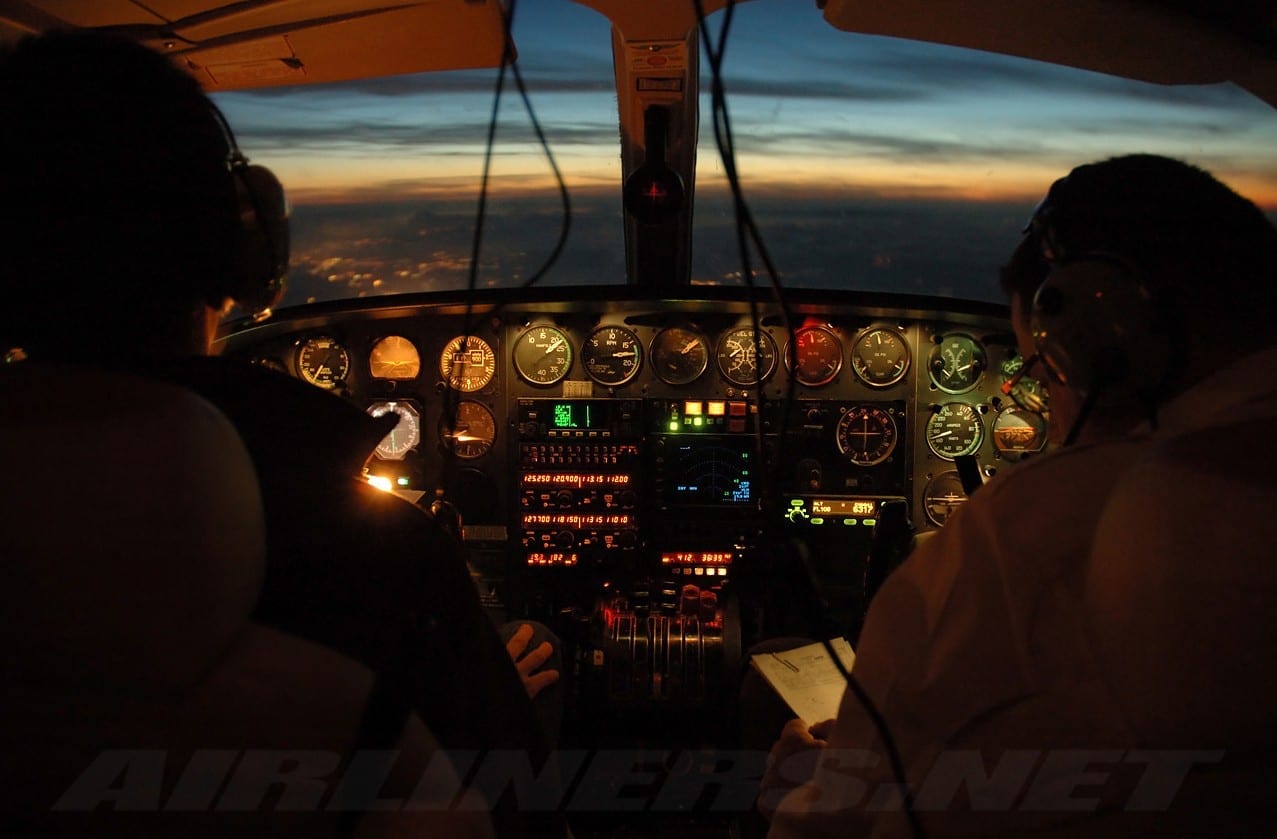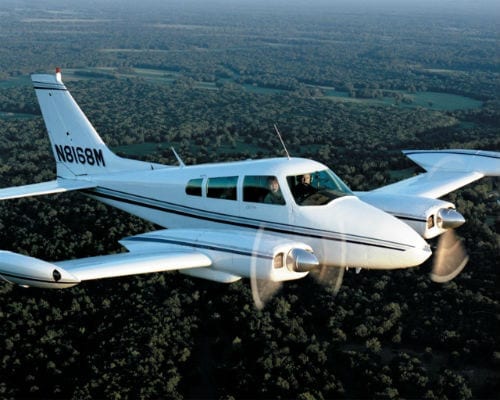Are you flying enough these days? Based on the pilots I talk to, the answer for most people is a resounding “no!” This goes far beyond the old joke that there’s no such thing as too much flying. Below a certain level of activity, both pilot proficiency and airplane reliability suffer, leading to thinner safety margins and a whole lot less fun.
Have we reached that level of activity? The current trend suggests we should be worried. The most recent FAA survey of general aviation activity shows a relentless, long-term decline in flying. According to the FAA, average annual hours flown for piston aircraft fell from over 130 in 1999 to under 90 in 2010. The FAA’s 2012 Fact Sheet reinforces this trend, with general aviation takeoffs and landings dropping 5.1% in 2010 and a further 2.3% in 2011.
Anecdotal evidence backs up these numbers, as any gathering of pilots will make clear. While 100 hours per year was once a fairly common amount of flying, many pilots today are logging well under 50. At these levels, pilots are spending their limited time in the air just trying to stay connected to aviation. Long trips and new ratings are things of the past.
Certainly, there are plenty of legitimate reasons for the reduction in personal flying, from $6/gallon Avgas and a bad economy to cheap airline tickets and busy lifestyles. Many pilots have made difficult but unavoidable choices to put the priority on things other than flying. It’s hard to blame them.
But whatever the reason, the result is the same: fewer active pilots. Unfortunately, less flying usually leads to less flying. As the cockpit becomes a less familiar place, confidence wanes. As confidence wanes, pilots reconsider that next trip. A vicious cycle can quickly get established. Over time, new habits form and flying gets replaced in everyday life. If Saturday used to be airport day and now it’s gardening day, changing back can be hard.
Airplane owners have their set of challenges, since airplanes don’t like to sit idle any more than pilots do. Especially over the winter, many airplanes can go for months without so much as an engine start. That doesn’t necessarily lead to something as dramatic as engine failure, but it does drive up long-term maintenance costs (especially corrosion) and reduce dispatch reliability. The economics of operating and maintaining your own aircraft get very unattractive at 30 or 40 hours per year, as fixed costs stay the same but must be spread over fewer hours.
Ultimately, either safety or utility has to be sacrificed. If you try to fly the same trips with lower proficiency, safety margins are cut. If you try to keep the same safety margins, utility declines. How can it not? As proficiency and confidence fades, hard IFR transportation flying becomes VFR flying, which then becomes local weekend flying. There’s nothing wrong with this change–indeed, this is a reasonable and safe reaction to lower levels of proficiency. But it reduces the power and excitement of a pilot’s license.
What’s to be done about this slide toward less flying? As usual, there is no miracle cure, but a variety of ideas are worth considering. A helpful first step is simply to admit there’s a problem. Look at your logbook and see what the trend is over the past few years–many pilots don’t even know their hours are declining. If they are, was that intentional because of time or budget constraints or did you just slowly find other things to do?
With the facts in hand, make a plan for more aviation in your life (even if the budget doesn’t allow for 100 hours of flying). Just like going to the gym, if you don’t specifically carve out time for airplanes, other things will get in the way. Find a flying friend and help each other stay on plan. It will keep you motivated, and by splitting costs, it may save you some money too.
Flying clubs and other aviation social organizations are another option that can keep you engaged, even when you’re not flying. Attending a seminar or fly-in is usually free and always educational. Many of these groups also sponsor fly-out breakfast runs or competitions, which offer great excuses to go flying.
Simulators can help, too. For under $500, anyone can have a fairly capable home simulator that doesn’t require a drive to the airport or an airplane reservation. Obviously a simulator will never keep you current on crosswind landings, but there is value in keeping your head in the game, especially for instrument pilots.
If you find your confidence is slipping to the point where you’re reconsidering making a flight, take a co-pilot or flight instructor along. With another pilot, you can still go places, but stay safe and improve your skills at the same time. Proficiency and confidence can be earned back if you work at it.
How much are you flying? Is it enough? Have you found a way to stay active with less time or money?
- Weather flying means learning to read clouds - November 11, 2024
- What’s wrong with the teardrop pattern entry - September 25, 2024
- What matters for VFR proficiency: better landings - August 26, 2024














Guilty as charged. Did my BFR early and plan continue doing it once a year until I can get up to at least 100 hours per year.
Sadly I am in the same boat. The main reason is finances. The cost of fuel here in the UK has risen over the last 2-3 years from 80p/litre to a whopping £2.20 per litre.
We’ve been hammered with cuts in subsidies from Europe as well as increases in tax, and of course the increase in the cost of oil / problems with sourcing 100LL
3 years ago I was flying 100+ hours a year. Now I’ll be lucky if I can log 25 hours this year :(
I sold my airplane and downsized to something more affordable. I’m flying as much as ever. I’m on pace to do about 175 hours this year. Just one strategy.
I’m a student pilot and owns a citabria. I was very sure that after i get my wings I will immidietly jump into a “real” airplane like a 182, but as time goes by and prices go up I feel like owning anything other then a champ (for fun that is) is just crazy.
The champ is cheap to fly, cheap to maintain, and a lot fun, but most importently, I don’t wake up every morning crying about the money i am wasting by not flying. Keeping the balance between cost and fun in this economy is the Key for deep sleep and a happy wife :-)
When I owned a Cessna 172 in the 1980s, my peak year was about 110 hours, mainly due to living in Minnesota (brrr) and having a very demanding job. I sold out when I hit 10 hours a year. In retirement, to “fly cheap,” I bought an old but nice Aeronca Chief. Peak hours so far? About 25. The barrier is not money (3.5-4.0 gal/hr)but mechanical issues that have kept the airplane “in service” but not “in service.” I am hoping that the current upgrades will yield a reliable sport plane that will fly 50-100 hours/year. My bottom line for currency in the 172 was at least one hr/week; at that level, I flew confidently in various weather and to all kinds of airports hundreds of miles from home.
One way to reduce the Co$t of Flying is to join CAP . They have some ways to Fly for Free. ( Ok it’s called Funded Flights , but same thing ) Check out local Squadrons , every State has a Wing . They are on The Web .
Just be aware of what you’re getting into with CAP. Probably about 6 months to a year before you can be a Mission Pilot (those are the funded flights), then all sorts of regs on what you can (mostly mission training) do or can’t do (no one except CAP in the plane, no “personal” flights, only fly in one state mostly, etc. etc.). And always the regs on what you must do for home, online study to stay eligible to even be in CAP. Yeah, I’ve done it for over 5 years. Thinking it’s not fun anymore. A club is the place to be.
If I want to fly more, I need to make more money. To make more money I have to spend more time working. If I work more I don’t have time to fly. :-)
I barely did 50 hours a year during my training years. Seemed like I was flying constantly. Not sure how anyone manages to put in 100+ a year, must be nice! Doing around 15-20 hours a year now. Definitely impacts the confidence and the willingness to fly in IMC.
In the area I live the rental rates are so high it’s now cheaper to own. Problem is trying to set up a partnership just can’t find anyone interested. I’m constantly keeping an eye out. I see tons of a/c in the area that just sit idle. I’ve even tried approaching owners of some of them about buying time as it would help us both out but as of yet no luck. Was in the military club system for awhile and that was by far the most affordable flying I’ve done.
Got back into the air a couple of months ago after a looooonnnnngggg layoff from flying. Through the local USAF Aero Club it was relatively inexpensive so I started flying about 9-10 hours a month just in time for the Brass to close the club. Fortunately the members moved almost en mass to a local field to reconstitute almost the same organization so I hope to continue flying at about that rate.
Gave up flying in the mid-70’s like many people, unable to maintain a safe level of currency raising a family, building a career etc. Got back into it three years ago with a Light Sport Certificate and glad to see that my enjoyment is undiminished. This time around, my personal promise is to get out weekly if at all possible – business travel gets in the way sometimes – and try to average around 50 hours per year. This doesn’t sound like a lot but takes a concerted effort to fit in. Shooting for a weekly flight, even if its just 45 min in the pattern goes a long way to maintaining a safety culture and confidence.
Simple contemplation here–the absurdity of a quarter-million-dollar Skyhawk or half-million-dollar Skylane.
Used to own a 182RG but finally leased it to a flying club then sold it to them. Now I’m working on the Light Sport Certificate & in between I’m sitting right seat & sharing costs with other pilots just to keep flying when I can afford it.
My hours have decreased slightly, but not significantly, and I can still manage 100+ in a good year. Owning the airplane has the psychological benefits of (a) not feeling the pinch of writing a check after each flight, and (b) making you want to fly more to drive down the /per hour cost when you calculate that at the end of the year. But fuel prices and maintenance are tough on the wallet, and I’m sure flying for fun makes no economical sense.
I have sensed a decrease in traffic over the past few years too. It seemed that 10-15 years ago on a CAVU Sunday you’d be dodging traffic left and right, but now it’s more lazy. That being said, I went for a little local sightseeing trip today (a Thursday) in the SF Bay Area, and Concord and Livermore were both BUSY! And what was particularly heartening was the number of really young student pilots at the FBO.